- Courses
- GS Full Course 1 Year
- GS Full Course 2 Year
- GS Full Course 3 Year
- GS Full Course Till Selection
- Answer Alpha: Mains 2025 Mentorship
- MEP (Mains Enrichment Programme) Data, Facts
- Essay Target – 150+ Marks
- Online Program
- GS Recorded Course
- Polity
- Geography
- Economy
- Ancient, Medieval and Art & Culture AMAC
- Modern India, Post Independence & World History
- Environment
- Governance
- Science & Technology
- International Relations and Internal Security
- Disaster Management
- Ethics
- NCERT Current Affairs
- Indian Society and Social Issue
- NCERT- Science and Technology
- NCERT - Geography
- NCERT - Ancient History
- NCERT- World History
- NCERT Modern History
- CSAT
- 5 LAYERED ARJUNA Mentorship
- Public Administration Optional
- ABOUT US
- OUR TOPPERS
- TEST SERIES
- FREE STUDY MATERIAL
- VIDEOS
- CONTACT US
PLACES IN NEWS 19th FEBRUARY 2025
PLACES IN NEWS 19th FEBRUARY 2025
21-02-2025
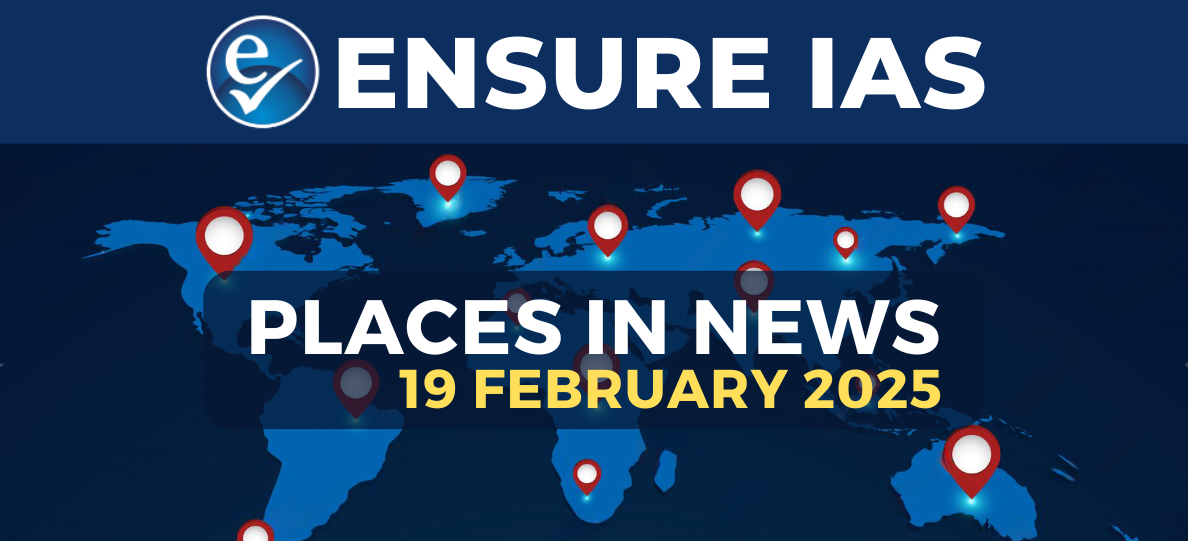
Sowparnika River
Why in news?
- Environmentalists have expressed concern over rising pollution in the Sowparnika River, which flows near the Kollur Mookambika Temple, warning of its detrimental environmental impact.
About Sowparnika River:
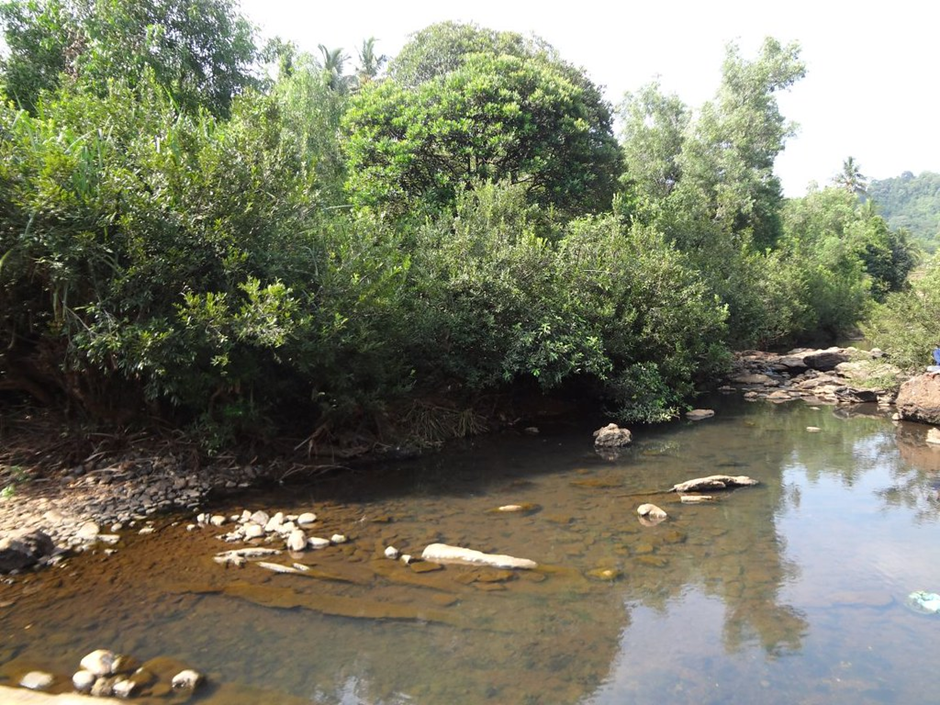
- Location and Origin:
- The Sowparnika River is a west-flowing river in Karnataka, originating from the Kodachadri Hills in the Western Ghats.
- It is primarily rain-fed and flows through the Byndoor taluk before reaching the Arabian Sea.
- The river passes near the famous Mookambika Temple in Kollur, making it a significant natural and cultural landmark.
- One of its unique geographical features is near Maravanthe Beach, where the river runs parallel to the Arabian Sea, separated by a narrow land strip. This rare phenomenon enhances its scenic beauty and attracts tourists.
- Historical and Cultural Significance:
- The Sowparnika River is deeply intertwined with Hindu mythology. According to legend, Garuda, the celestial vehicle of Lord Vishnu, performed penance on its banks. This association gave the river its name, derived from "Suparna," another name for Garuda.
- The river holds religious importance, as its waters are believed to have purifying properties. Devotees visiting the Mookambika Temple often take a ritual bath in its waters.
- Environmental Concerns and Pollution:
- In recent years, pollution levels in the Sowparnika River have risen due to increased human activities, temple-related waste, and agricultural runoff.
- The influx of tourists and pilgrims has led to improper waste disposal, including plastic and ritual offerings, contaminating the river.
- Deforestation in the Western Ghats has also affected water quality by increasing soil erosion and sedimentation in the river.
- The growing pollution threatens aquatic biodiversity and the ecological balance of the river, emphasising the urgent need for conservation measures.
Parambikulam Tiger Reserve
Why in news?
- A recent faunal survey conducted by the Forest Department at Parambikulam Tiger Reserve has recorded 15 newly identified species, expanding the biodiversity checklist of the protected area.
About Parambikulam Tiger Reserve:
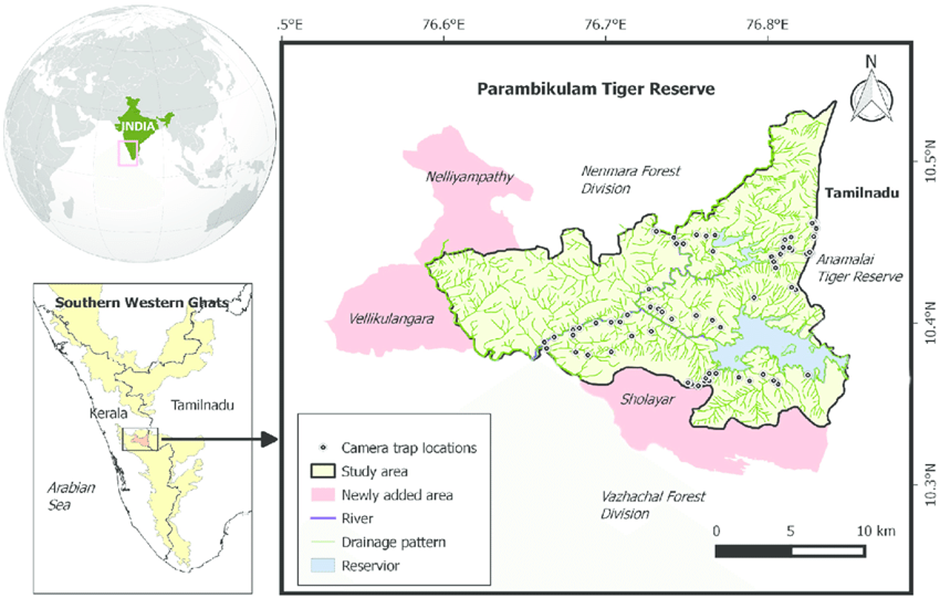
- Location and key features:
- Parambikulam Tiger Reserve is a protected area situated in the Palakkad and Thrissur districts of Kerala, India.
- It was officially designated as a Tiger Reserve in 2009 under the Project Tiger initiative, reinforcing conservation efforts for the Bengal tiger and other wildlife.
- Several rivers, including the Parambikulam, Sholayar, and Thekkady, traverse the reserve, providing essential water sources that sustain its rich biodiversity and varied ecosystems.
- The reserve is home to four indigenous tribes—Kadar, Malasar, Muduvar, and Mala Malasar—who reside in six settlements within the protected area, coexisting with nature and contributing to conservation practices.
- Flora and Fauna:
- The reserve consists of mixed deciduous, evergreen, and semi-evergreen forests, contributing to its diverse vegetation.
- Unique habitats such as montane and marshy grasslands, locally referred to as 'vayals,' are present, offering distinct ecological niches.
- Teak plantations and deep freshwater ecosystems, formed by three dams, further enhance the region’s biodiversity.
- Parambikulam Tiger Reserve is renowned for hosting one of the densest gaur populations, alongside 49 species of mammals.
- It shelters iconic wildlife such as Bengal tigers, Asian elephants, Indian leopards, spotted deer, and rare species like the lion-tailed macaque and Nilgiri marten.
- The reserve is also home to endemic species, including the Parambikulam Frog and a rare sucker fish, highlighting its ecological uniqueness.
Lake Victoria
Why in news?
- Lake Victoria is turning green due to the spread of deadly bacteria, posing serious environmental and health risks. Scientists warn of worsening water quality and ecological damage in the region.
About Lake Victoria:
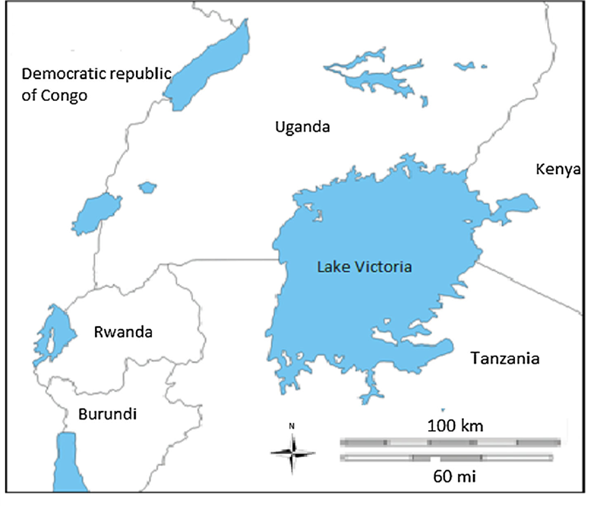
- Location:
- Lake Victoria is the largest freshwater lake in Africa and the second-largest in the world by surface area. It is located in East Africa and is shared by Tanzania, Uganda, and Kenya.
- The lake spans approximately 68,800 square kilometres, making it a crucial water body for millions of people in the region.
- Formation:
- Lake Victoria was formed around 400,000 years ago and is part of the Great African Lakes system.
- It lies within a shallow depression created by tectonic movements associated with the divergence of the African and Somali plates, which are slowly pulling apart as part of the East African Rift System.
- This geological activity led to the formation of several lakes in the region, including Victoria. The lake has an average depth of 40 meters and a maximum depth of about 83 meters.
- It is primarily fed by rainfall and small rivers, with the Kagera River being its largest tributary. It drains into the White Nile through the Victoria Nile at Jinja, Uganda.
- Potential Resources:
- The lake is a vital source of water, food, and livelihood for surrounding communities. It supports a rich biodiversity, including more than 500 species of fish, the most commercially significant being Nile perch and tilapia.
- Fisheries employ millions and contribute substantially to the economies of the three bordering countries.
- The lake also facilitates transportation, with ferries and boats connecting various towns and cities. Additionally, hydroelectric power generation at dams like the Owen Falls Dam in Uganda relies on its waters.
- Reason behind change in colour:
- Large portions of the lake's surface are turning green due to the excessive growth of toxic cyanobacteria, a phenomenon driven by pollution, eutrophication, and climate change.
- Agricultural runoff, industrial waste, and untreated sewage introduce high levels of nutrients like nitrogen and phosphorus, promoting algal blooms. These blooms deplete oxygen levels, leading to fish kills and disrupting the aquatic ecosystem.
- The warming climate has exacerbated the problem, as rising temperatures create favourable conditions for algae proliferation.
- Additionally, the introduction of invasive species like the Nile perch has altered the lake’s ecological balance, reducing native fish populations that once controlled algal growth.
- Urgent measures, including waste management, conservation policies, and regional cooperation, are essential to restore and sustain this crucial water body.
Somalia
Why in news?
- The U.S. launched airstrikes in Somalia targeting Islamic State operatives amid ongoing counterterrorism efforts against extremist groups in the region.
About Somalia:
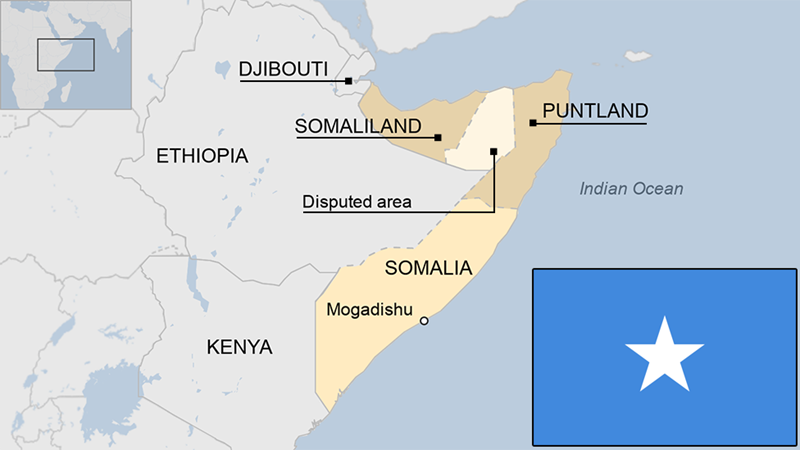
- Location:
- Somalia is located in the Horn of Africa, bordered by Ethiopia to the west, Djibouti to the northwest, Kenya to the southwest, and the Indian Ocean to the east.
- The country has the longest coastline in mainland Africa, stretching over 3,300 kilometres, making it strategically significant for maritime trade and security.
- The terrain consists mostly of plateaus, plains, and highlands, with the Shebelle and Jubba rivers being the primary sources of freshwater.
- The climate is predominantly arid and semi-arid, with limited rainfall and frequent droughts.
- Extremism in the region:
- Somalia has been plagued by extremist activities, particularly involving Al-Shabaab, an al-Qaeda-affiliated militant group.
- Al-Shabaab emerged in the mid-2000s as a radical offshoot of the Islamic Courts Union (ICU), which briefly controlled Mogadishu (the capital of Somalia) before being ousted by Ethiopian forces in 2006.
- Since then, the group has waged a prolonged insurgency against the Somali government and African Union peacekeeping forces (ATMIS, formerly AMISOM). The militants frequently carry out suicide bombings, assassinations, and attacks on military bases, targeting Mogadishu, Kismayo, and central and southern Somalia.
- In addition to Al-Shabaab, Islamic State (ISIS) factions have gained a foothold, particularly in the Puntland region, where they operate in remote mountainous areas.
- Although smaller than Al-Shabaab, these ISIS-linked operatives pose a growing security threat. The U.S. military, alongside Somali and African Union forces, frequently conducts airstrikes against these extremist elements to curb their expansion and disrupt their operations.
- Other Humanitarian Crisis:
- Beyond security threats, Somalia faces severe humanitarian crises, particularly due to droughts and food insecurity.
- The country has experienced recurrent droughts, with the most devastating ones occurring in 2011, 2017, and 2022, leading to widespread famine and displacing millions.
- The combination of climate change, inadequate infrastructure, and conflict has left nearly 50% of the population in need of humanitarian aid.
- Internal displacement is another major challenge, as ongoing violence and climate disasters have forced millions to flee their homes. Refugee camps in Baidoa, Mogadishu, and border areas near Kenya are overcrowded, with limited access to food, water, and healthcare.
- Somalia’s crises require sustained international aid, stronger governance, and regional cooperation to address security threats and alleviate humanitarian suffering. Without urgent intervention, instability and human suffering will continue to escalate.
UPSC CSE PYQs
|
|
Also Read |
|



